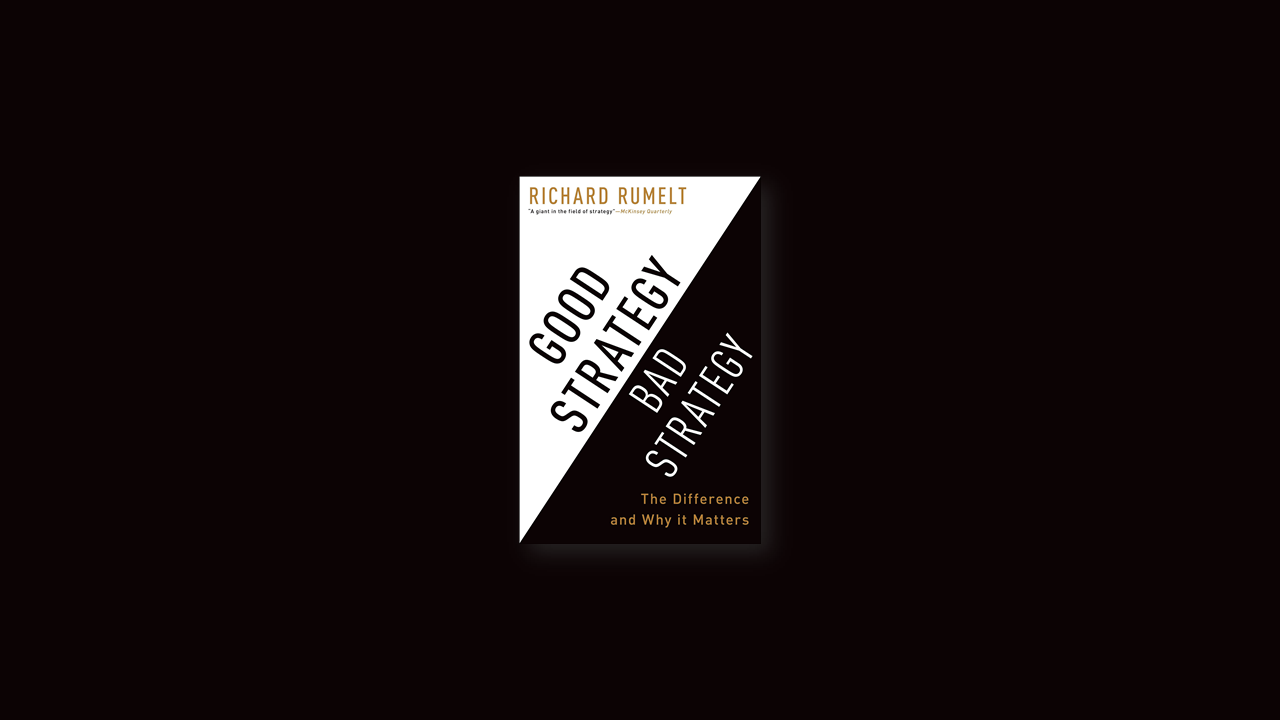A good strategy identifies 1 or 2 critical issues, then focuses action and resources on them.
It doesn’t just draw on existing strength; it creates one through the coherence of its design.
Kernel of a strategy
- Diagnosis – what’s going on in there?
- Guiding policy – sign post marking the direction but not detail
- Coherent action – feasible coordinated polices, resource commitments and actions designed to carry out the guiding policy
A good strategy is more than just “spend more and try harder”
A good strategy requires leaders who are willing to say no to a wide variety of actions and interests.
A good strategy is as much about what an organization does not do as it is about what It does.
Bad strategy
Fluff – a form of gibberish masquerading as strategic concepts
Failure to face the challenge – when you cannot define the challenge, you cannot improve it
Mistaking goals for actions
Bad strategic objects – failure to address critical issues
Why so much bad strategy
- Leaders are unwilling or unable to make choices among competing interests
- Siren song of template-style strategy – filling out blank vision, mission, values…
- Belief that all you need is positive attitude
Using Leverage
Strategic leverage arises from a mixture of anticipation, insight into what’s most pivotal or critical in a situation and making a concentrated application of effort.
Anticipation does not require psychic powers. Simply by considering habits, preferences and policies of others, we can anticipate.
Growth
Healthy growth is not engineered (through acquisition).
It’s the outcome of growing demand for special capabilities It’s the outcome of having superior products or skills.
Using Advantage
Part of a leader’s job is to identify asymmetries.
No one has advantage at everything. Key is to press where you have an edge and to side-step situations in which you don’t.
Gaining an edge means widening the gap by either increasing value to buyers, reducing costs or both.
It’s hard to show the skill of a sailor when there’s no wind.
It’s in the moment of transition, the pecking order changes.
Thinking like a Strategist
Think about your own thinking.
Consult experts – this can be former leaders, past professors. It’s those who can challenge us and raise the level of our thinking.
Write it down – You can think about strategy, but it only comes real when we put it on paper. It enables us to think more deeply whether it makes sense.
Visualize and simulate – Take a situation. Map the kernel. It’s amazing what it’ll do for your organization and leadership capabilities.
Analyze completely – Do not just opt in for the first solution that comes to mind.
Think WHY it’s done
Create-Destroy – try hard to destroy current options
Human biases
Engineering overreach – so complex nobody understands it
Smooth sailing fallacy – things have been so good for so long nothing will change
Social herding – belief in mass opinion
Inside view – belief that this case is different

